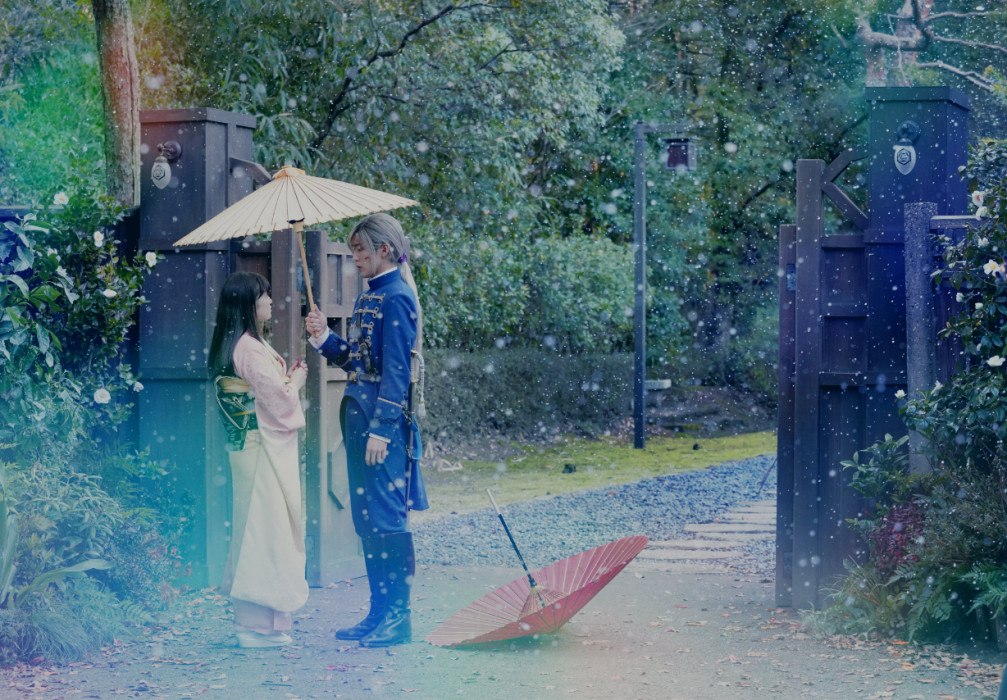A breathtakingly beautiful live action adaptation of a hit series! Watashi no Shiawase na Kekkon (My Happy Marriage) starring Meguro Ren and Imada Mio is not only visually gorgeous, but carefully and lovingly crafted to show the gradual love formed between two isolated individuals, all while affected by society, supernatural elements and brewing conflicts around them.
Header Image Source: https://watakon-movie.jp/
Table of Contents
- The Premise of Watashi no Shiawase na Kekkon
- Changes from the Original Work
- Beauty in Subtlety and Gentle Progression: The Best Thing of the Watakon Film
- Other Shining Aspects of the Film
- What the Film Could Have Done Better
- Will There be a Sequel?
To provide a bit of background about my history with this series, when I went to see the live action movie for Shiawase na Kekkon for the first time (yes I’ve seen it more than once!), I was not familiar with the work. I hadn’t read the light novel or the manga so I had no idea what to expect from the story.
However, the trailer was what had captivated me. I enjoy works set in the Meiji and Taisho eras and seeing the lives (and fashion!) of people living back then. So finding out it was a love story set in this period of time, plus the actors are from previous works I had liked, I knew I had to see it.
After watching the movie, I realized it was not just a romance, but included mystery, action and supernatural elements as well. I ended up craving more of the story so I began to read the light novels. At the time of writing this article, I’ve finished the third out of six novels.
This article will contain light spoilers for the movie - but I will refrain from full-on spoilers until the final two points - discussing what I hoped the film did better and whether there may be a sequel. So, please proceed at your own risk!
The Premise of Watashi no Shiawase na Kekkon
Watashi no Shiawase na Kekkon - known affectionately as Watakon by fans and My Happy Marriage in English - is set during the Meiji era when Japan was undergoing bunmei-kaika or westernization in Japan.
The basic story is as follows:
There are supernatural powers that exist in this world called 異能 (inoo). Examples of inoo are the ability wield things like water and fire to fight against 異形 (igyou) and 災い (wazawai) - bad creatures and spirits that attack people. Naturally, families that pass down inoo to their children became well-known and of a higher status, and they began to arrange marriages with other inoo-wielding families to retain strong powers.
We meet our protagonist, Saimori Miyo, who is treated poorly by her stepmother and stepsister for 2 reasons:
-
Miyo’s father was forced to break up with his lover (the stepmother) to marry Miyo’s mother in an arranged marriage - and so when Miyo’s mother died and Miyo’s father could finally marry the stepmother, the stepmother resents Miyo’s existence and takes it out on her.
-
Miyo cannot use powers while Miyo’s stepsister can, so they consider her worthless.
Miyo gets sent off to marry Kudo Kiyoka, the captain of the 陸軍対異特殊部隊 (rikugun tai-i tokushu butai) - a taskforce of inoo-wielders who defend the citizens of the country from wazawai. He’s known to be cold and closed off (this is due to previous failed marriage prospects), and he is distrusting of Miyo from the moment she arrives at his home. Miyo, due to the abuse from her family, is also very timid and apologizes for everything, feeling lacking as a partner to such an esteemed man. However, in their awkward and hesitant way, they begin to understand and care for each other bit by bit.
And in the background, a sinister plot which starts with releasing powerful and vengeful spirits begins to take shape…
/
— 『わたしの幸せな結婚』公式@アニメ化&実写映画化決定🌸 (@watashino_info) May 12, 2023
シリーズ累計
7️⃣0⃣0⃣万部
突破🌸
\
「#わたしの幸せな結婚」シリーズが、
累計発行部数700万部を
突破いたしました🎉
(※コミック・電子書籍の数字を含む)
いつも応援してくださるみなさま
本当にありがとうございます🌸
🔻作品情報はこちらhttps://t.co/DSzX4bBEjX pic.twitter.com/TcaRrSbOFZ
The series began as a light novel written by Agitogi Akumi which was then followed by a manga adaptation. The series is incredibly popular - selling over 7 million copies (light novel and manga combined). Both are in the process of being translated into English (and other languages) as well! The live action film (and upcoming anime) has and will definitely only add to its popularity, both domestically and overseas.
Writer's Pick
Changes from the Original Work
While the basic setup of the film follows the original work, there were several big changes from the original that I very much appreciated in the film. From what I understand, from how far I’ve read into the original series, the film mainly covers the first two books with some major differences. (Apologies if they brought in scenes from later books that I wasn’t aware of.)
The Story Balance Between Kiyoka and Miyo
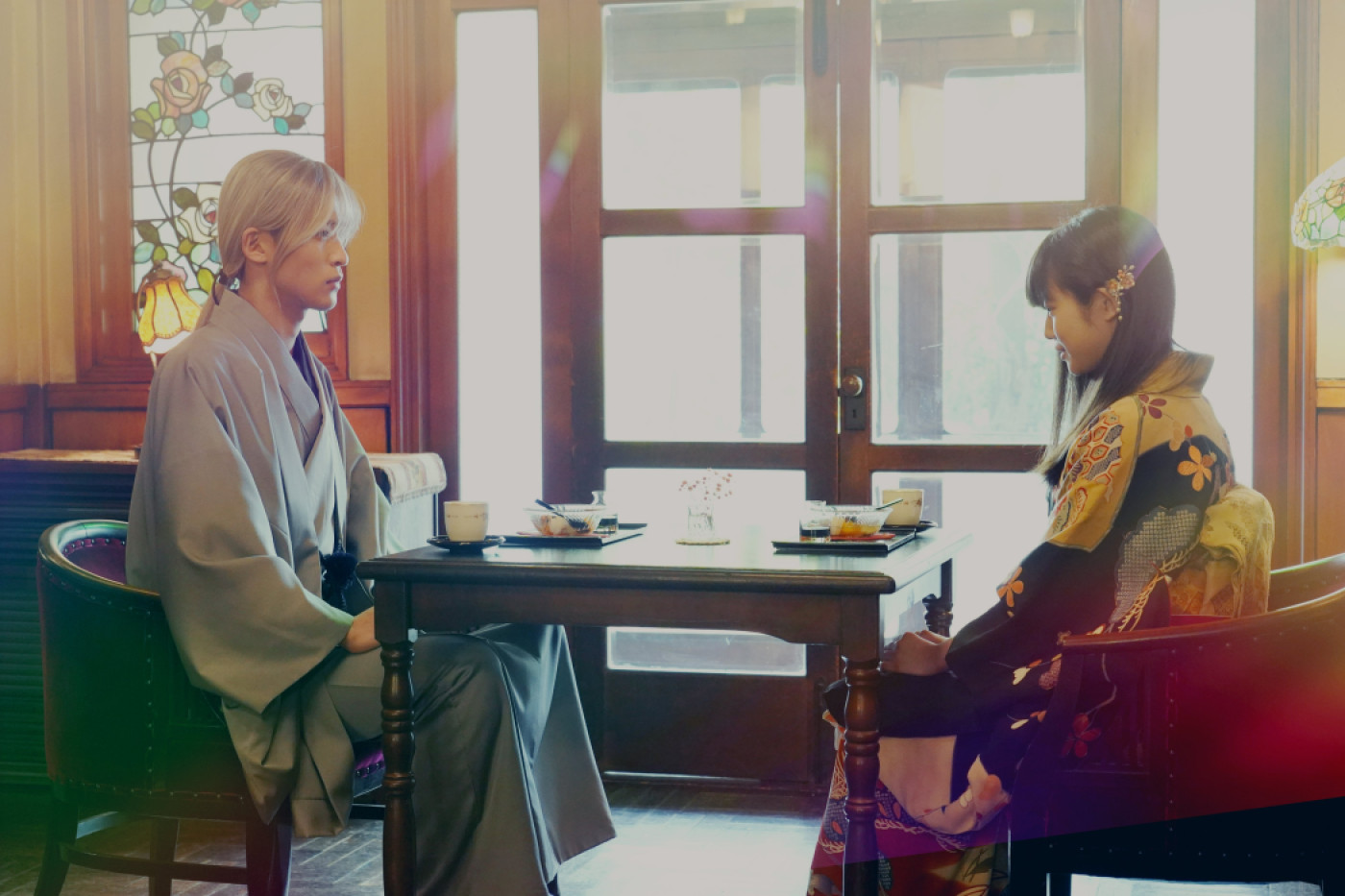
Image Source
The original work focuses mainly on Miyo’s side of the story, and what she’s thinking about throughout her journey of both becoming Kiyoka’s betrothed and also discovering herself. We get a clear picture of just how much she is traumatized from her time spent in her own family home, and how much it affects her self-esteem and how she feels about everything that happens to her in the story.
The film shows these things, of course, as Miyo is the main person that we spend following throughout the film - but it balances more time with Kiyoka’s side of the story than the novel, in my opinion. The medium being film also makes it a little easier to show both perspectives in one scene.
Kiyoka can be seen visibly reacting to Miyo throughout getting to know each other - so while it’s unknown to Miyo herself most times, the audience can see his intrigue, worry and care. He is also shown actively trying to discover more about Miyo’s family and background, and making efforts to make Miyo feel more at ease in his home.
The film makes it clear that the title - My Happy Marriage - is about both of them finding happiness in their blossoming relationship.
The Change-up of Supporting Characters
〖 場 面 写 真 解 禁 🌸 〗
— 東宝映画情報【公式】 (@toho_movie) November 18, 2022
🎬2023年3月17日(金)公開
映画『#わたしの幸せな結婚』
清霞(#目黒蓮)率いる
陸軍・特殊部隊の場面写真をお届け!
◇清霞の右腕的存在の
五道(#前田旺志郎)
◇怪しげな瓶を前にした
岡部(#西垣匠)と望月(#佐藤新)
◇食堂で和気あいあいと話す隊員たち@watakon_movie pic.twitter.com/ChHtCuDh8l
There are a couple of characters in the original work that do not appear or have a smaller part in the film. While novel and manga fans may be disappointed, I believe it allows more focus onto other certain characters and takes time to develop those characters instead.
For example, while Godou seemed to only appear occasionally in the original work, he has a much larger presence in the film as Kiyoka’s right-hand man and friend since childhood. The actors brought a genuine warmth and sense of trust into that relationship - something they intentionally worked on to emulate in real life - which heavily impacts the latter part of the film at the climax. Godou, played by Maeda Oshiro, quickly became my favorite supporting character.
Not only that, but it delves into Kiyoka’s relationship with his unit. In the books, anything work related mainly featured Kiyoka’s relationship with Godou. The movie, however, spends time showing Kiyoka’s relationships with various members of his unit, including Godou, which again heavily impacts the latter part of the film. In the books, Miyo doesn’t interact with many of the Kiyoka’s men, at least in the first two novels, but the film brings her into direct contact with all of them, allowing us a refreshing glimpse of Kiyoka and his troops’ personalities as well as how they interact with each other.
While I was invested in Miyo and Kiyoka’s relationship, it was this dedication to showing Kiyoka’s other relationships that was ultimately what moved me to tears at the climax.
And of course there are other supporting characters straight from the original work such as Tsuruki Arata - portrayed by Watanabe Keisuke in the perfect balance of mysterious, mischievous yet earnest, Takaihito the emperor's son who has a lot weighing on his shoulders- played by Onishi Ryusei, and Yurie who gently but lovingly pushes Miyo and Kiyoka closer together - portrayed by the beautiful Yamamoto Mirai.
The Outside Conflict and Action Scenes
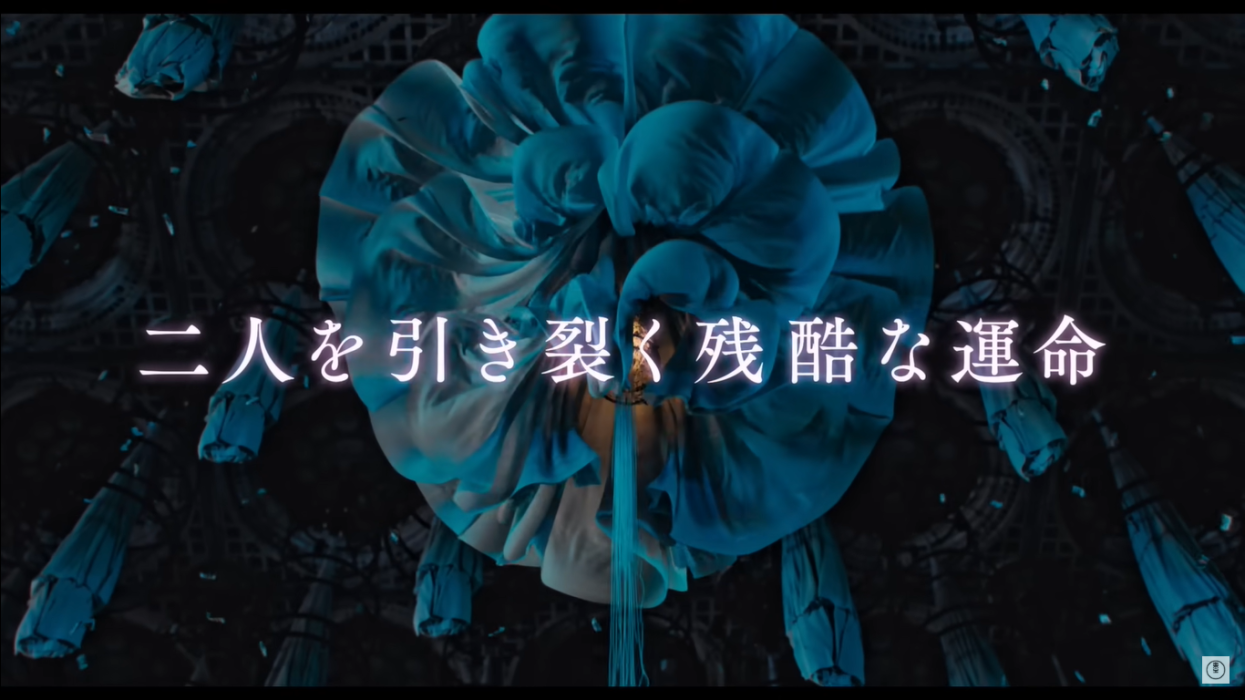
Image Source
Another thing that stood out to me is that the conflict with the wazawai (vengeful spirits) was used much more heavily in the film than in the books. The first two novels spend most of the time developing Miyo and Kiyoka’s characters and relationship, focusing on her conflict with her family. The threat of the wazawai isn’t really introduced until later into the story, and at a smaller scale.
However, the wazawai being released from the grave sets up the framework for the entire film (pictured above), as it is the very first thing we see even before we meet Miyo and Kiyoka, and is a consistent presence in the story, even if the main focus at first is the couple.
Thus it blends well into the buildup with finding out more about Miyo’s family and her nightmares that plague her. The resulting scenes where we see just how serious the wazawai are, and Kiyoka and his men being forced into action, are also well portrayed and make you feel just how much is at stake. The choreography for the action scenes were also well done, with a great mix of sword fighting and inoo attacks.
Beauty in Subtlety and Gentle Progression: The Best Thing of the Watakon Film
Given the time period and also Japanese culture, the way the film goes about relationships and portraying the development is much more subtle than one might be used to.
However, the quiet gradualness of Miyo and Kiyoka’s relationship and each of their characters developing is a beautiful contrast to the “loud” action and external conflict coming their way. They are both quiet and guarded, so it takes time for them to open up and realize that the other person is someone they can trust and learn to love.
⋰
— 映画『わたしの幸せな結婚』大ヒット上映中 (@watakon_movie) April 28, 2023
【#映画わた婚】
皆さまから寄せられたお気に入りのシーン⑤🌸💍
⋱
「嫌か?私とこのまま暮らすのは」
「……私、ここに居たいです。旦那様が許してくださるのなら」
清霞の髪に組紐を結ぶあのシーン🎬💍
組紐にまつわる裏話も🫢#わたしの幸せな結婚 #目黒蓮(#SnowMan) #今田美桜 pic.twitter.com/ZIpEWx5ddc
Miyo’s transformation was a joy to watch. The writer of the original work, Agitogi Akumi, was surprised when Imada Mio was cast to play Miyo, wondering how such a cute actress would portray such a shabby character*. But Mio captured Miyo’s trauma painfully well and how strongly it carried into her life with Kiyoka, with her words and small actions such as shaking, keeping her eyes downcast. The really gradual change in her physical appearance was also a very nice touch. When we first meet her, she’s in a worn-out kimono, her hair unkempt and skin covered in grime and soot. But as the movie goes on, her hair begins to gradually shine, her skin and complexion improving, and most of all, she begins to carry herself with a little bit more confidence, looking up more, walking more steadily and with purpose. Her kimono in each subsequent scene also reflect her transformation as well. The beauty and cuteness of Imada Mio herself was able to shine by the end of the film.
(※) From Agitogi Akumi’s comments in the Watashi no Shiawase na Kekkon official film pamphlet.
⋰
— 映画『わたしの幸せな結婚』大ヒット上映中 (@watakon_movie) April 26, 2023
【#映画わた婚】
皆さまから寄せられたお気に入りのシーン③🌸💍
⋱
初対面で清霞が美世に冷たく言い放ったシーン🎬
「ここでは私の言うことに絶対に従え。私が出て行けと言ったら出て行け。」
胸が痛くなるとの声もありましたが印象的なシーンです😢💍#わたしの幸せな結婚 #目黒蓮(#SnowMan) pic.twitter.com/FAjqxGAj0C
Kiyoka’s gradual change is also quite subtle. His first words to Miyo are quite harsh and cold, which is such a contrast to how he treats her at the end. Yet there is not one particular moment you could say he fell in love. As the actor for Kiyoka, Meguro Ren, states, “Rather than a switch suddenly flipping, I think that his heart opened up to her bit by bit.” He goes on to mention that it was hard to portray this gradualness, but he did his best to show how in each subsequent scene, he is emotionally affected by Miyo’s devotion and actions more than the last*. And he does this so well. While there may be few “grand” romantic gestures in the modern sense, each look he gives her, each extension of a hand to support her - it’s clear in that subtle way that his heart is being moved by her more and more than the last time.
Side note: This movie cemented me as a fan of Meguro Ren. I liked his earlier works (like “Kieta Hatsukoi (My Love Mix-up)”) but paid more attention to the plot than his acting then. His ability to convey so much in small gestures and looks shown both in this film and in his recent drama “Silent” really impressed me, and I’m looking forward to his future acting projects. You could say that he gradually grew on me too (Too on the nose? haha). And he pulled off the silver wig so well and was incredibly dashing as troop commander.
(※) From Meguro Ren’s comments in the Watashi no Shiawase na Kekkon official film pamphlet.
Because of the reliance on subtle moments and gradual development, for some watching the film, as a romantic work, it may feel a bit lacking. But if you compile all the little scenes of them exchanging looks, small smiles, and opening up to each other, it’s such a cute relationship you want to root for - especially for Miyo after all that she endured. My favorite moment is when Miyo gives Kiyoka a joyful look after spotting him walking by, and Kiyoka can’t hold back a smile of his own full of endearment.
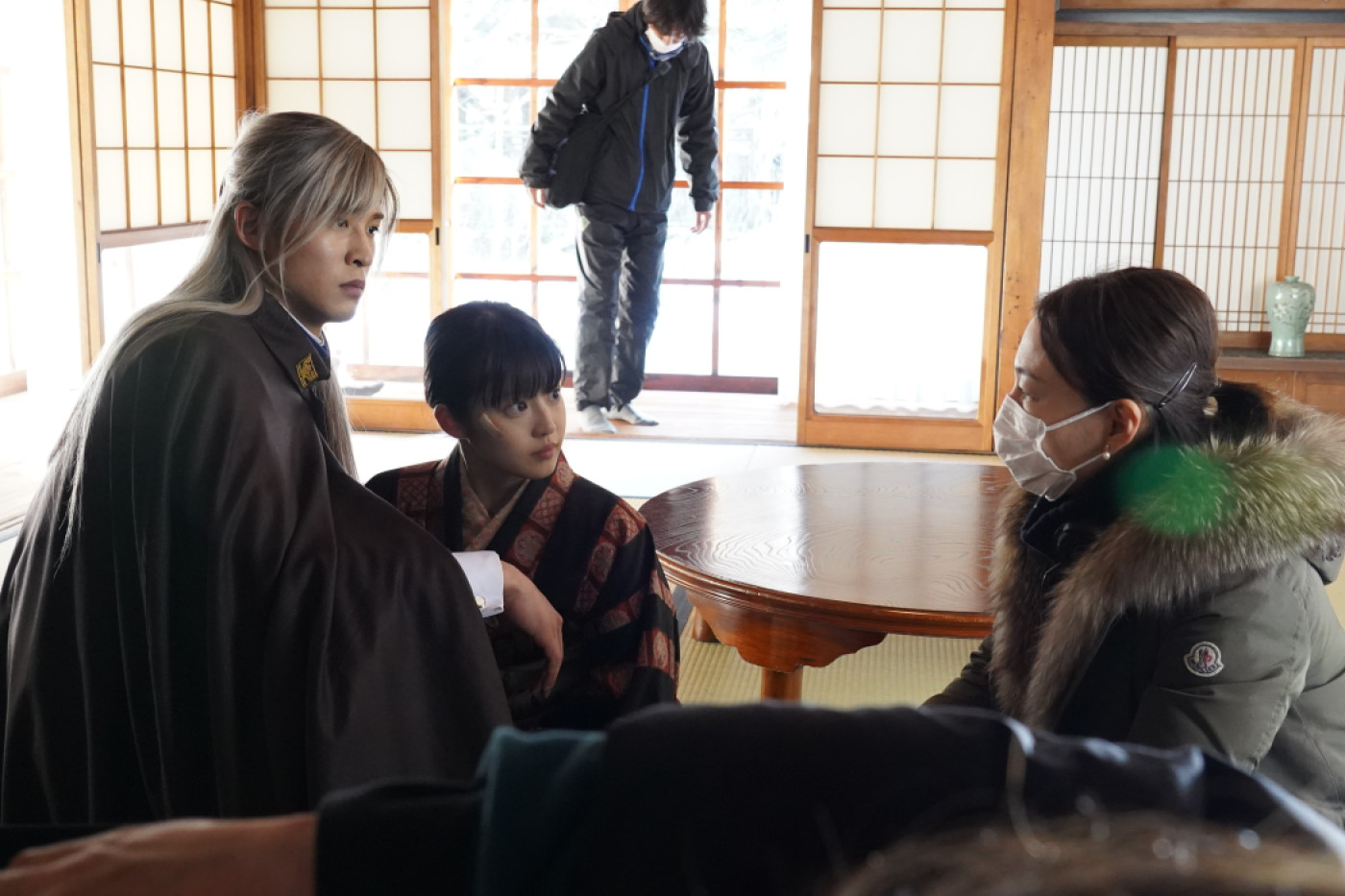
Image Source
This and the interactions between them and the supporting characters - both those with good and bad intentions - feel very real and human-like even in a fantasy-filled world set in the past. This was what director Tsukahara Ayuko intended. She has an impressive repertoire of works (mainly Japanese dramas) under her belt as a director - “MIU404”, “Unnatural” and “Saiai (Dearest)” to name just a few of her hits and some personal favorites - and what’s clear about each of these works is that while the genres differ, the relationships between the characters are what make each of these works stand out. “Watashi no Shiawase na Kekkon” is the same. If it wasn’t for the portrayal of the characters and their relationships, their expressions of their motivations, frustrations and desires in their own ways in the midst of what is happening around them - this movie and its characters would have felt very one-dimensional.
Other Things the Film Does Well
The film overall is just such a beautiful visually pleasing film, and many aspects contribute to that. While I won’t go into too much detail, these are just a few other aspects of the film I really enjoyed.
Visual Effects
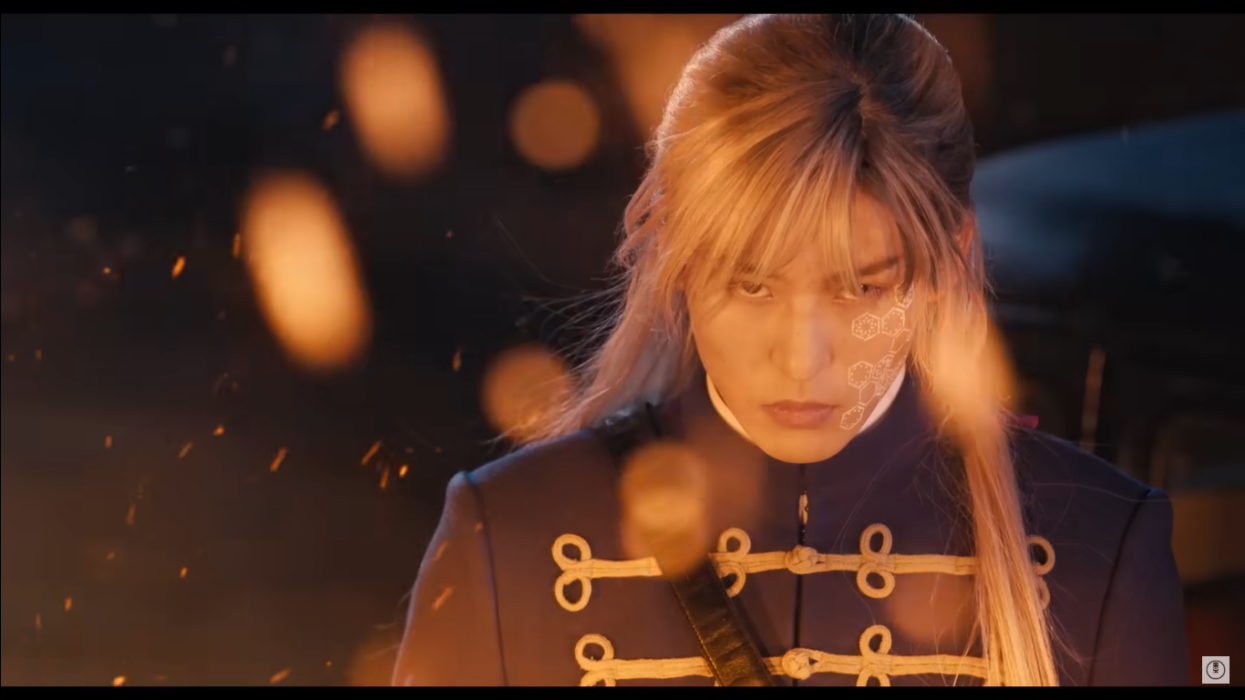
Image Source
When the inoo wielders use their powers, a mark shows on their face. It’s a good visual addition to cue viewers into what’s happening. It’s also beautifully designed, and each character has a different mark, so it’s fun to catch those details and draw connections as to what the designs mean.
The visual effects portraying the inoo (apart from the mark on the face) were really fascinating especially in the action scenes, because it effectively portrayed the feelings of the inoo-wielder - whether rage, suspicion, wish to remain elusive, etc.
The Fashion
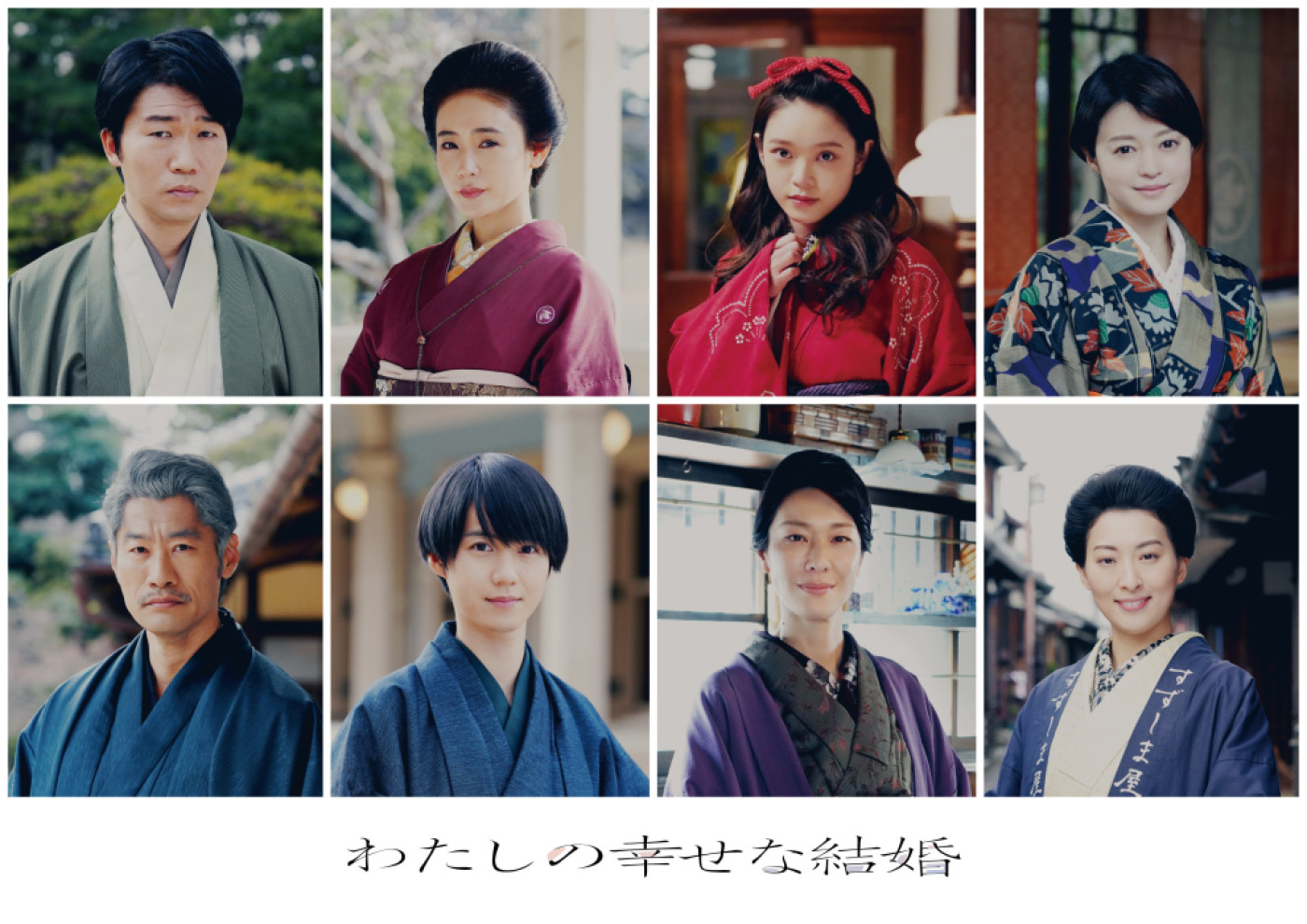
Image Source
As I mentioned earlier, I was really excited to see the fashion in the film, and I was not disappointed. As the period the work is set in is during the bunmei-kaikan, or westernization, there’s a mix of suits and western-inspired clothing as well as traditional kimono and other Japanese clothing.
The kimono especially were beautiful and elegant. The clothing really elevated each scene, whether it was the troop’s uniforms, the tailored suits, or kimono worn both when going out, and when staying at home. For the kimono, real antiques were used, especially for Miyo’s outfits, and it really brought the time period to life. And the colors and styles really reflected each character's personalities well.
Beautiful Filming Locations
The entire film was so immersive, partly thanks to the gorgeous locations that they picked for this film. I want to visit them all someday if I can!
It would take a whole article to list all of them but the main ones are:
Takada Honzan Sensuji Temple in Tsu City, Mie Prefecture
Where the palace scenes were filmed.
Rokkaen at Kuwana City, Mie Prefecture
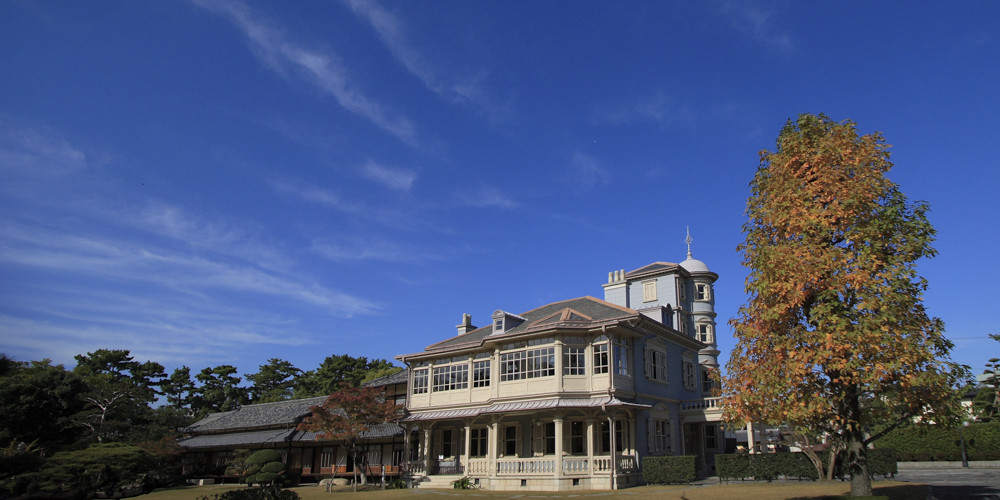
Image Source
Where Miyo’s family home scenes were filmed.
Maizuru, Kyoto

Image Source
Where Kiyoka’s house (東郷邸) was located, as well as the red brick warehouse where the climax scene took place.
Imai-cho, Nara
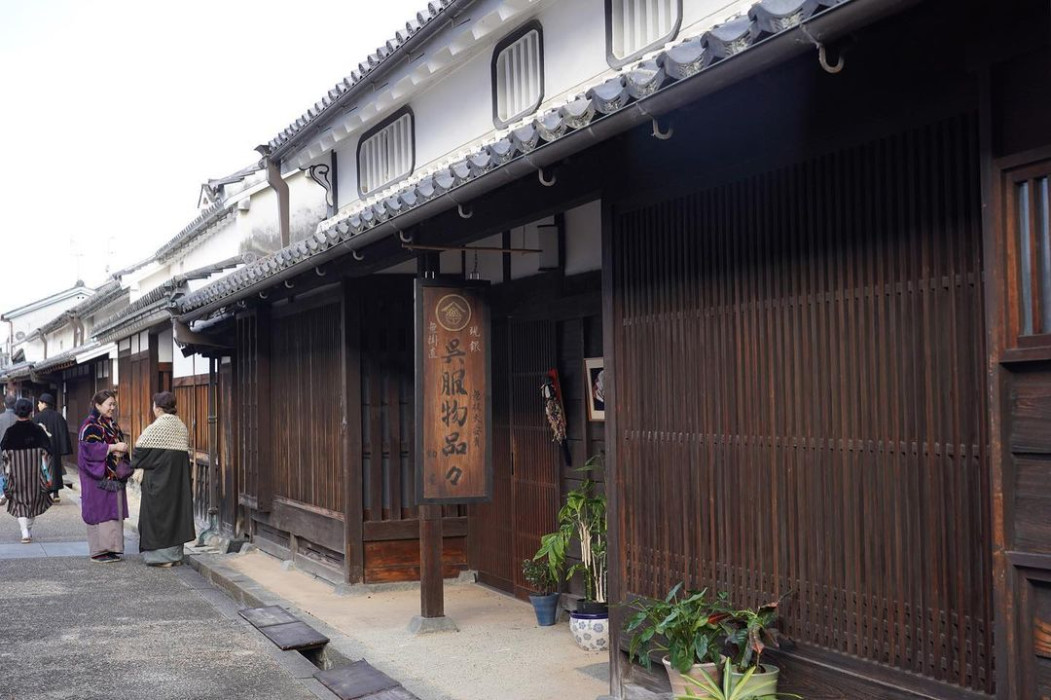
Image Source
The traditional townscape where Miyo goes shopping, first with Kiyoka, and also with Yurie.
The Music
The soundtrack was the perfect blend of calming beautiful instrumentals to go along with the more quiet scenes with uptempo pieces that pull you into the scene in anticipation. The piece that stands out most is "Okutsuki no Mai" from the very first scene when a mysterious person is seen dancing along to a fast uptempo beat led by strings and drums later joined by the rest of the symphony, and you know something big and ominous is about to happen but you can't help but watch. It's also the very first piece in the original soundtrack and has the same effect of pulling listeners into the album.
Also the theme song for the film, provided by Snow Man (which the main actor Meguro Ren is in), was the perfect song to end the movie. The slightly wistful yet hopeful singing style paired with the powerful and beautiful vocals really draws you in. And the lyrics are so fitting for the film.
The music video features the members in both kimono and suits, fitting for a movie set in the period of westernization.
Some Things I Wish the Film Did Better
⚠️ Full spoilers from this point on:
While I loved the film personally, I also know people who felt that it was a little lacking. One big reason is that the series isn’t finished, and there is definitely more to be told. Yet, the groundwork had to be set in this one film while also completing one arc, and as a result, parts felt a bit rushed. As with any work that is the start of the series, there wasn’t enough time to have everything thoroughly explained! Some scenes felt like they were cut a bit short (literally ended abruptly) and not given enough time to breathe, because time was so limited to cover the groundwork of the story.
What is happening with the emperor and his motivations is a bit hard to follow, especially after finding out that he set a lot of the conflict in the story into motion. Some of his actions seem contradicting - such as him being fearful of Kiyoka’s power and the Usubas’ powers separately, but also together - which is hard to work out as the film barrels into the closing act to finish the film.
Some things had to be more heavily inferred in the film because of the lack of time, such as why Kiyoka was so cold at the beginning. The novel has more time to flesh out the reasons behind his actions - the previous women who he considered marrying were terrible matches - but the film leaves it more open to interpretation why he is the way he is. We leave the film not knowing too much about Kiyoka’s backstory, which again may have been cut for time.
Image Source
And while I still think the subtlety and gradual progression of Kiyoka and Miyo’s relationship was really well-done, a little more time could have been spent on nurturing their relationship (without the outside conflicts crashing down on them) as well. What I feel is the strength of the film - the slow build-up of trust and understanding between the characters - is heavily contrast with how fast the rest of the film goes and while the film manages to balance it well, some of that balance crumbles in my opinion in the third act.
And it really feels like it’s just the beginning of the story, especially regarding Miyo. We find out that Miyo has an incredibly rare power, but because Miyo has spent most of the film (understandably) being passive and hesitant, she’s just barely able to use her power at the end.
While it would be strange for her to already masterfully be able to use her newfound powers and I’m glad they didn’t go that route, it might be a little frustrating for people looking for a stronger more assertive female character. However, the film does leave open a future story where Miyo learns how to harness her powers and is more confidently able to stand by Kiyoka’s side as his wife - something we got just a hint of at the end of the film in the proposal scene.
Will There be a Sequel?
〖動員𝟐𝟎𝟎万人突破🌸💍〗
— 東宝映画情報【公式】 (@toho_movie) May 13, 2023
映画『#わたしの幸せな結婚』
🎬5/11までの公開55日間で
観客動員:2,006,266人
興行収入:26.4億円突破!
大変多くの方に観て頂き
本当にありがとうございます!
∇上映劇場はこちらhttps://t.co/lYDTtE6UFZ#映画わた婚#目黒蓮(#SnowMan) #今田美桜@watakon_movie pic.twitter.com/vQWJ4Sk9Df
(⚠️ Also contains spoilers.)
Will there be a sequel? I certainly hope so!
Like I mentioned, there’s so much potential with Miyo’s newfound powers! It will be fascinating to see if and how those powers can be combined or used in tandem with Kiyoka’s.
The last scene in the film showed a gathering of people, including the person who released the malicious spirits from the grave, and presumably the actual mastermind behind the plan, wearing a mask reminiscent of the Black Death mask with a beak. The atmosphere was ominous, as if this was simply the beginning of their plan. Who are these people? What is their ultimate plan?
We don’t know yet, so it must mean a sequel is planned! After all, the film finishes around the end of the 2nd novel. But nothing is announced yet, and it may be a while before we get any news about it. But the success of this film - 2.6 billion yen in revenue with over 2 million people who watched the film - certainly seems promising!! Perhaps a sequel would have more time to deal with the small issues I had with the film.
Not only that, but there is an upcoming anime, starting on July 5. It will be fun to see how much the first season covers, as well as how closely the anime follows the novels and manga, as opposed to the film. The artwork is gorgeous and the cast is also very promising as well! (Godou will be voiced by my favorite voice actor Shimono Hiro which I'm personally excited for.) Make sure to check it out this summer.
Conclusion
Watashi no Shiawase na Kakkon was a surprise hit to me, and I’m glad to have found a film so early in the year that I loved so much. As the film will be shown in several countries overseas and is of course yet to be released on DVD and also via streaming, I hope that many people will love this film (and anticipate more!) as much as I did.
Update:
The film is now available for DVD and Blu-ray pre-orders and will be released September 27, 2023.
※ https://watakon-movie.jp/








